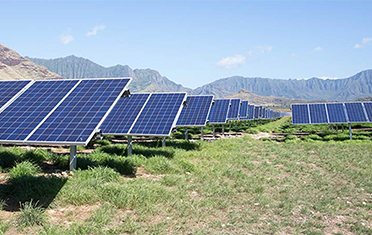New Renewable Energy Projects
Keep track of our progress on all of the various renewable energy projects currently in the works
A vision for decarbonizing our economy
The 2021 international summit on climate change made clear that the actions we take this decade will determine whether humanity can slow or stop the warming of the planet.
- Hawaiian Electric is committed to significantly reducing carbon emissions by adding renewable generation to our island grids and retiring oil-fired power plants.
- By 2045, our carbon emissions will be net zero, meaning whatever small amount of emissions we produce will be captured or offset.
- If everyone pitches in, we’ll create a cost-effective, sustainable and resilient energy system for future generations.
Download climate change action flyer
“Hawaiian Electric has a critical role in reducing carbon emissions this decade in the State of Hawaii, especially in transportation, so this new goal is significant. The COP26 meetings made absolutely clear that even though Hawaii has done a lot, we have to do even more. Working together, Hawaii can do its part to hit these targets. We are not willing to wait for the rest of the planet to do what we know is in our community’s best interest.” - Gov. David Ige
“Hawaiian Electric’s devotion to Hawaii and our planet by committing to reduce greenhouse gas emissions … is a testament to their leadership and a true gamechanger for our islands. Our administration is dedicated to addressing climate change and creating a Hawaii Island where our keiki can raise their keiki for generations to come. That is why we are honored to work alongside forward-thinking companies like Hawaiian Electric, who share a unified vision of sustainable Hawaii for us all.” - Hawaii County Mayor Mitch Roth
Some of the ways we’ll get there
Using more grid-scale and customer-owned energy storage
Adding 1 gigawatt of renewable energy by the end of the decade
Retiring 6 fossil-fueled generating units and reducing the use of others as renewable projects come online
Adding 50,000 rooftop solar systems
Shutting down the state’s last coal plant in 2022
Pursuing cost-effective, low-emission or zero-emission fuels like biofuels and green hydrogen and other emerging technologies
“The Institute for Climate and Peace strongly supports rigorous emissions reduction objectives in Hawaii and everywhere, particularly at this important global turning point of COP 26. We applaud Hawaiian Electric for its commitment to significantly increasing renewable energy generation and energy storage capacity across the islands, and we hope that other institutions and companies will follow their lead. Extensive and reliable renewable energy networks in Hawaii will mitigate the harm done to our ecosystems by carbon-intensive energy production while also promoting sustainable, peaceful futures for all.” - Zelda Keller, executive director of the Institute for Climate and Peace
Making a down payment on a decarbonized Hawaii economy
Hawaiian Electric’s commitment to decarbonizing its energy system will play a significant role in the economy-wide reduction Hawaii will have to achieve to be in line with the U.S. reduction commitment of at least 50%.
The U.S. commitment is aligned with the Intergovernmental Panel on Climate Change (IPCC) recommendation of no more than 1.5°C warming to avoid potentially devastating climate events. For Hawaii to be aligned with the national commitment, other industries, including transportation, agriculture and industry, will also have to make significant emissions reductions.





